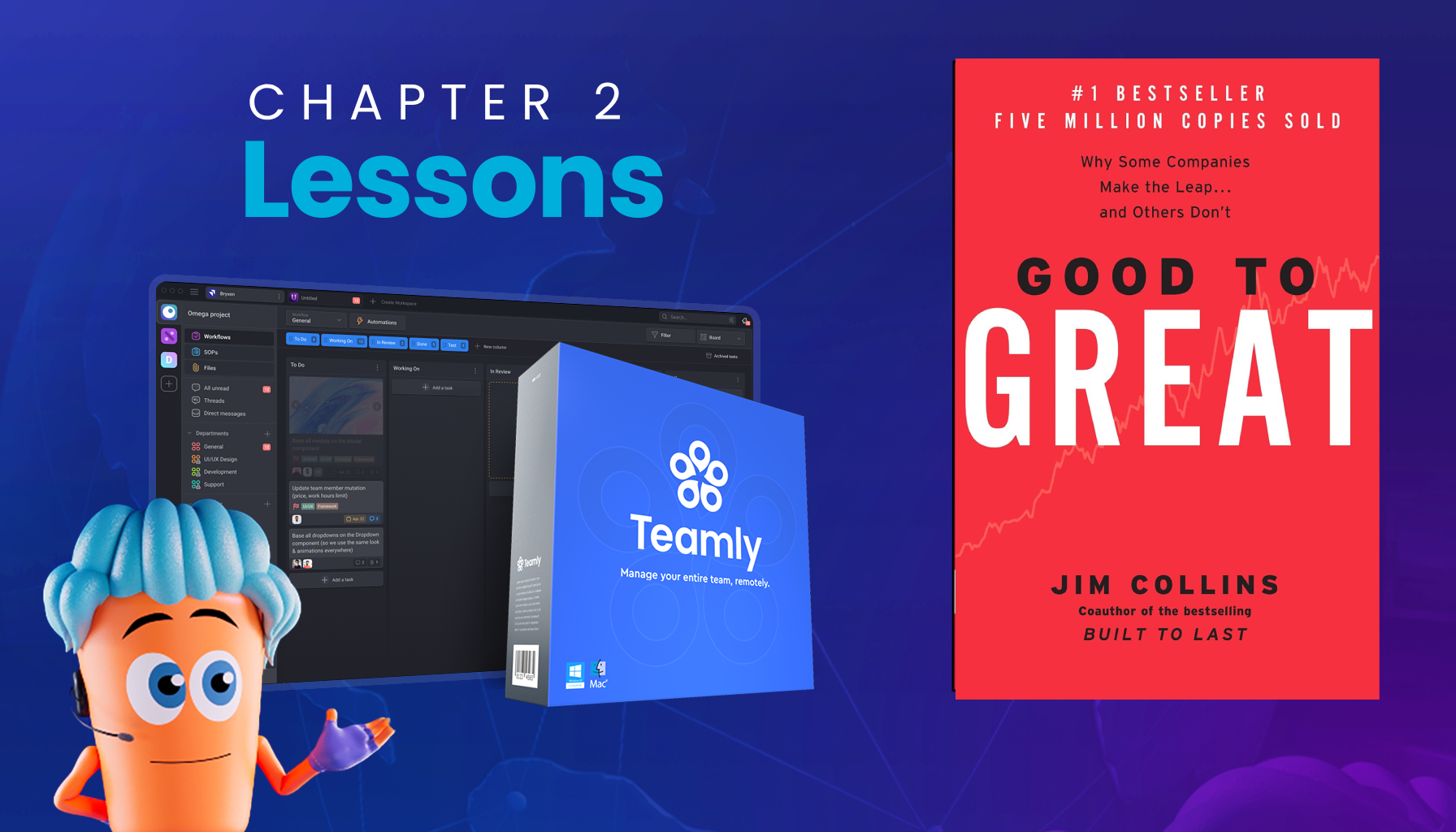
Click the button to start reading
Exploring the Principles of “Good to Great” by John Collins – Chapter 2
In Jim Collins’ seminal book, Good to Great, the concept of leadership reaches an entirely new level with the introduction of Level 5 Leadership.
Collins’ research, which analyzed companies that made the leap from good to great, identified key traits that separated these companies from their competition.
What stood out the most was the consistent presence of Level 5 leaders at the helm during pivotal moments. But what exactly is a Level 5 leader, and how can businesses today benefit from these findings?

Level 5 Leadership is the highest level in a hierarchy of executive capabilities. It combines two seemingly contradictory traits: personal humility and professional will.
These leaders possess an extraordinary resolve to achieve long-term results, yet they do so with a quiet, understated demeanor.
Unlike the more flamboyant, celebrity-style leaders we often see today, Level 5 leaders are more like ‘plow horses’ than ‘show horses.’ They work diligently and consistently, prioritizing the success of their companies over personal fame.
What makes Level 5 leaders so effective is their ability to blend ambition with humility. They are fiercely driven to produce great results but do so for the sake of the company, not their own ego.
They shun public adulation and are often described as reserved, modest, and even shy. This humility, however, does not detract from their determination. In fact, it enhances it.
Level 5 leaders demonstrate an unwavering resolve to do whatever it takes to make their companies great, even if that means making tough decisions or firing underperforming employees, including family members.

One of the most notable aspects of Level 5 leaders is their willingness to set up their successors for even greater success.
Unlike ego-driven leaders who often leave behind weak successors to ensure their own legacy remains untarnished, Level 5 leaders build a foundation that allows the company to thrive long after they are gone.
This selfless approach is what sets them apart and contributes to the long-term sustainability of the business.
For example, in Collins’ study, every good-to-great company had a Level 5 leader during the critical transition period, while the comparison companies often suffered from egocentric leadership that led to their decline.
The data from Good to Great shows that one of the most damaging trends in recent leadership is the tendency to select larger-than-life, celebrity leaders, especially by boards of directors.
These high-profile leaders may bring short-term gains, but they often fail to create the lasting impact that Level 5 leaders achieve. In contrast, Level 5 leaders are fanatically driven by an almost stoic determination to produce results, regardless of the challenges they face.
They are not in it for personal glory; they are in it to build something great that will endure.

At Teamly, we believe that the principles of Level 5 leadership can be applied to any business, no matter the size or industry.
Our software is designed to help leaders and their teams work more efficiently and effectively, allowing them to focus on what truly matters: achieving great results.
Just like the Level 5 leaders in Good to Great, we encourage our users to prioritize long-term success over short-term recognition. By fostering a culture of humility and determination, businesses can build a strong foundation for future growth.
Another fascinating finding in Collins’ research is how Level 5 leaders attribute much of their success to factors outside of themselves.
They look out the window to give credit to their team, external circumstances, or even luck, while looking in the mirror when things go wrong. This behavior contrasts sharply with the comparison leaders, who often did the opposite—taking credit for success and blaming others for failure.
This pattern, known as the ‘window and the mirror,’ is a powerful reminder of the importance of humility in leadership.

The journey to becoming a Level 5 leader is not always straightforward. Collins acknowledges that there is no simple formula or ‘Ten-Step Plan’ to achieving Level 5 leadership.
However, the research suggests that many people have the potential to develop into Level 5 leaders under the right circumstances.
Significant life experiences, such as overcoming adversity or personal development, can often trigger this transformation.
Additionally, having a mentor or engaging in self-reflection can help unlock the traits that define Level 5 leadership.
While not everyone will reach the heights of Level 5 leadership, the lessons from Good to Great are valuable for any leader looking to improve their company’s performance.
By embracing the dual traits of humility and fierce resolve, leaders can create lasting change within their organizations.
Whether it’s setting up successors for success, focusing on long-term goals, or fostering a culture of accountability, the principles outlined in the book offer a blueprint for building a great company.

If you’re looking to take your leadership to the next level, Good to Great is a must-read.
The insights on Level 5 leadership alone are worth the investment, but the book offers so much more.
It’s a treasure trove of research-backed strategies that can help any company, big or small, move from being good to truly great. To get your copy, visit Amazon today.
















